Medieval History

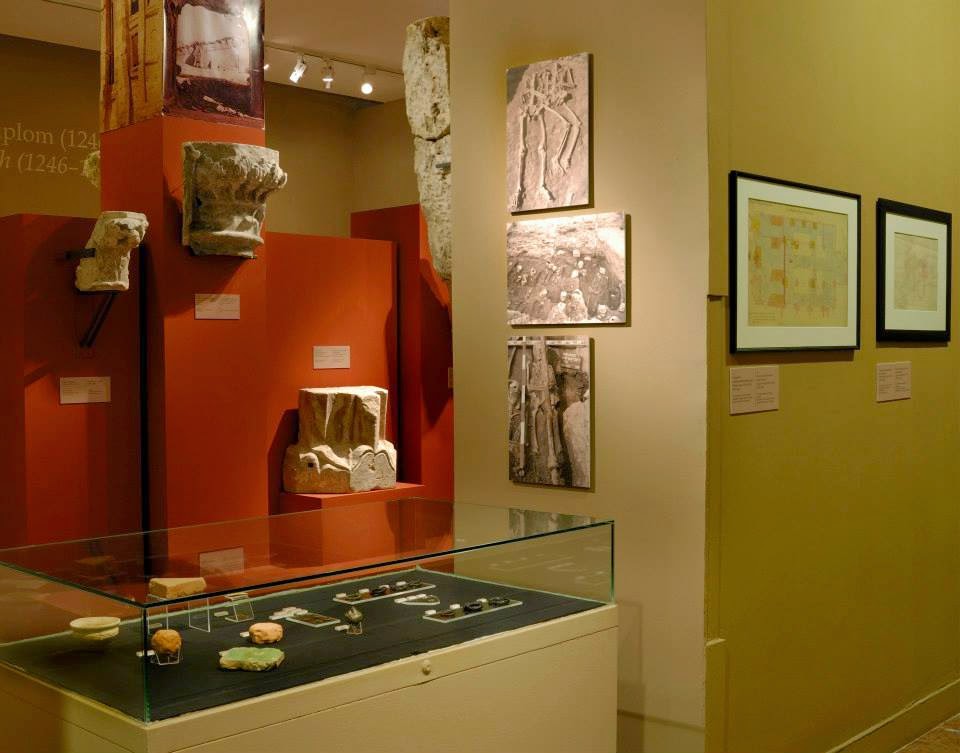
- 800 Years Of Ják Abbey
Fresco of St. George at Ják, c. 1256 This weekend - the weekend after Saint George's Day - mark the 800th anniversary of the foundation of the Benedictine monastery of Ják. It is known that the monastery was established by Márton "the Great"...
- Exterior Restoration Of The Abbey Church Of Lébény
Scaffolding at Lébény On my way to Vienna today (where my main goal was to see the exhibition on the medieval plans of the Stephansdom), I stopped at the Romanesque Abbey church of Lébény. Some alarming news emerged about the condition of the...
- Research And Renovation At Siklós Castle
The medieval castle of Siklós reopened after years of research and renovation. The castle lies in southern Hungary (just south of Pécs). For much of the 15th century (until 1481), the castle and the large estate was in the property of the mighty Garai...
- Medieval Holdings Of Budapest Museums
I often find myself trying to explain the system of Budapest's major art museums to foreigners. Although it is a clear system, it can still be confusing at times. For example, you can find important medieval artworks in all major museums of the capital....
- Destruction Of The Centers Of Medieval Hungary
On August 29 1526, the army of Suleiman the Magnificent defeated the Hungarian army at Mohács. King Louis II died on the battlefield, and the sultan's army marched on to take the capital, Buda. At that time, the Turkish army withdrew - but in 1541,...
Medieval History
Exhibition about the Matthias Church

A major new exhibition about the building and the history of the Church of Our Lady (Matthias Church) of Buda Castle opened at the Budapest History Museum. The Church is a major historic monument of Budapest, part of the Unesco World Heritage site of Buda Castle. Established after the Mongol invasion of 1241-42, the church became the most important ecclesiastical institution of Buda, and finally served as a coronation church in 1867 at the coronation of Franz Joseph I. Soon after that, it was completely remodeled by Frigyes Schulek in Neo-Gothic style, with the addition of it landmark spire.
During the Middle Ages, the Church of Our Lady served the purpose of a parish church for the town's German citizens. It was built and rebuilt in many stages. A royal charter from 1255 refers to the church as yet to be completed, while another document from 1269 calls it newly erected. The original, 13th century building was turned into a hall-church and rebuilt overall in the first half of the 15th century, at the time of King Sigismund. Its southern tower was built at the time of King Matthias. During the Turkish occupation of Buda it was converted into a mosque. During the 18th century, it was rebuilt in Baroque style, and used by the Jesuits, and later as parish church again. The present building originates from the rebuilding of Frigyes Schulek carried out between 1874-1896. The building was extensively renovated after World War II and most recently between 2004-2014. The current exhibition thus presents not only the history of the building, but also findings of this most recent period of research and renovation.
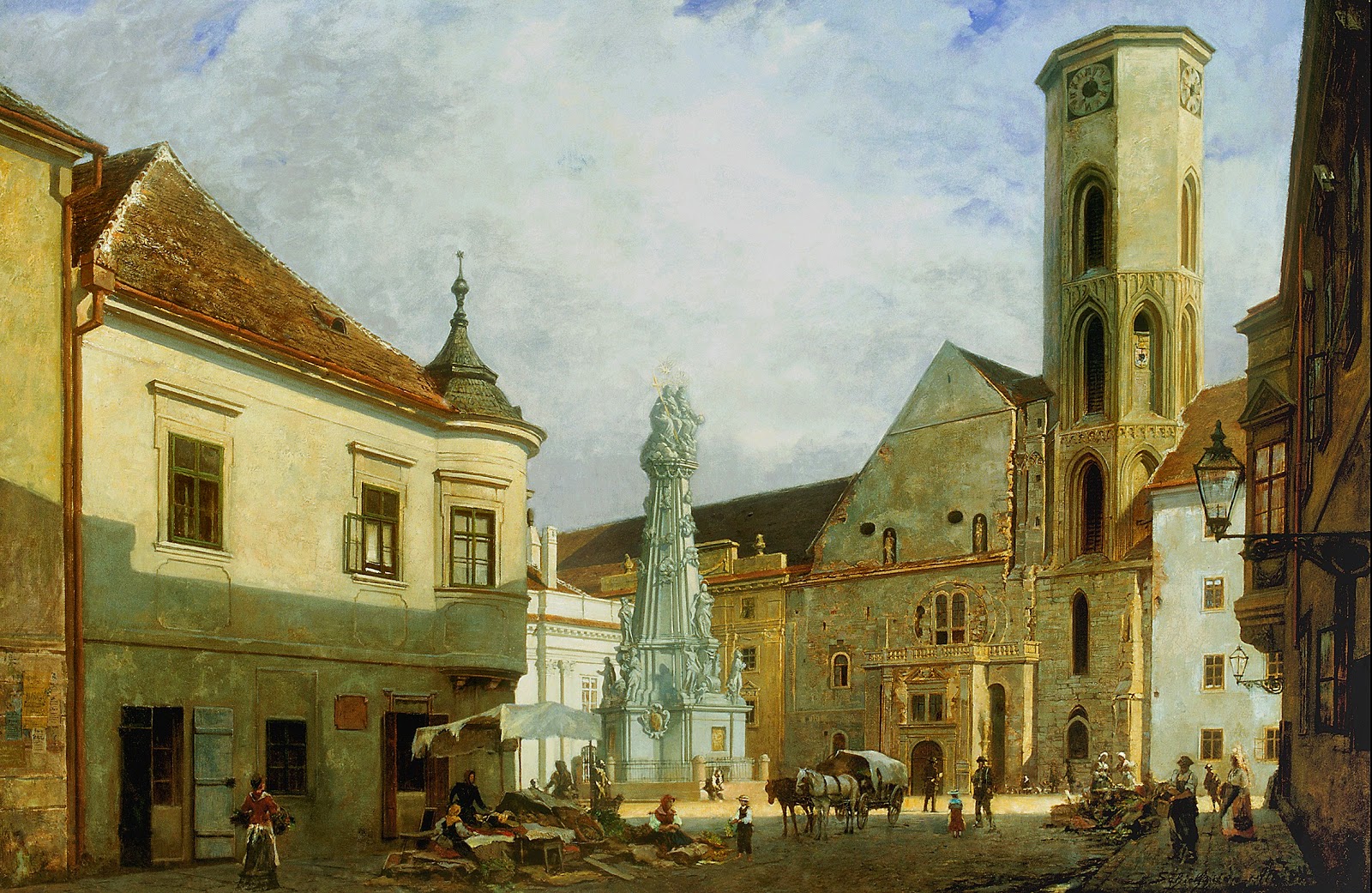 |
| The church before the reconstruction of the late 19th century, painting by A. Schikedanz |
After an introductory part focusing on the church as the site of the 1867 coronation, the exhibition is arranged chronologically. One room is dedicated to the two major phases of the medieval building. At the time of the rebuilding by Schulek, a large number of details of the medieval church fabric - including the portals - came to light. These finds provided a starting point for Schulek, who aimed to return the church to its "ideal," 13th century state. This meant for example the dismantling of the late gothic lateral sanctuaries of the church, to rebuild the side apses along their 13th century lines. Many late gothic elements were preserved and restored, however, including the monumental southern portal of the church or the chapel of the Garai family situated alongside the northern apse. The southern tower was rebuilt according to how Schulek imagined it should have looked like at the time of King Matthias in the 15th century.
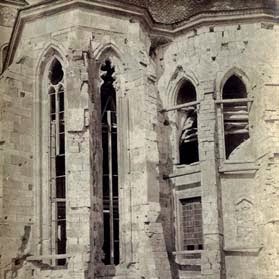 |
| Early 15th century eastern end of the church, as uncovered by Schulek (later largely dismantled) |
The exhibition includes a number of original medieval documents about the church, as well as stone carvings, archaeological drawings, as well as watercolour copies of wall-paintings in this section. Unfortunately, the medieval furnishings and liturgical equipment of the church did not survive. To get a fuller picture of the medieval church, it is necessary to go into the permanent exhibition of the Budapest History Museum - several large stone carvings were not moved into the temporary exhibition room. These include the smaller northern portal of the church from the 13th century, numerous architectural fragments as well as fragments of figural reliefs. During the late middle ages the church was an important burial site - in the permanent exhibition one can find the remains of the Garai chapel, erected by the most important Hungarian aristocrats of the15th century, as well as the tombstone of Stibor of Stiboricz, courtier of King Sigismund.
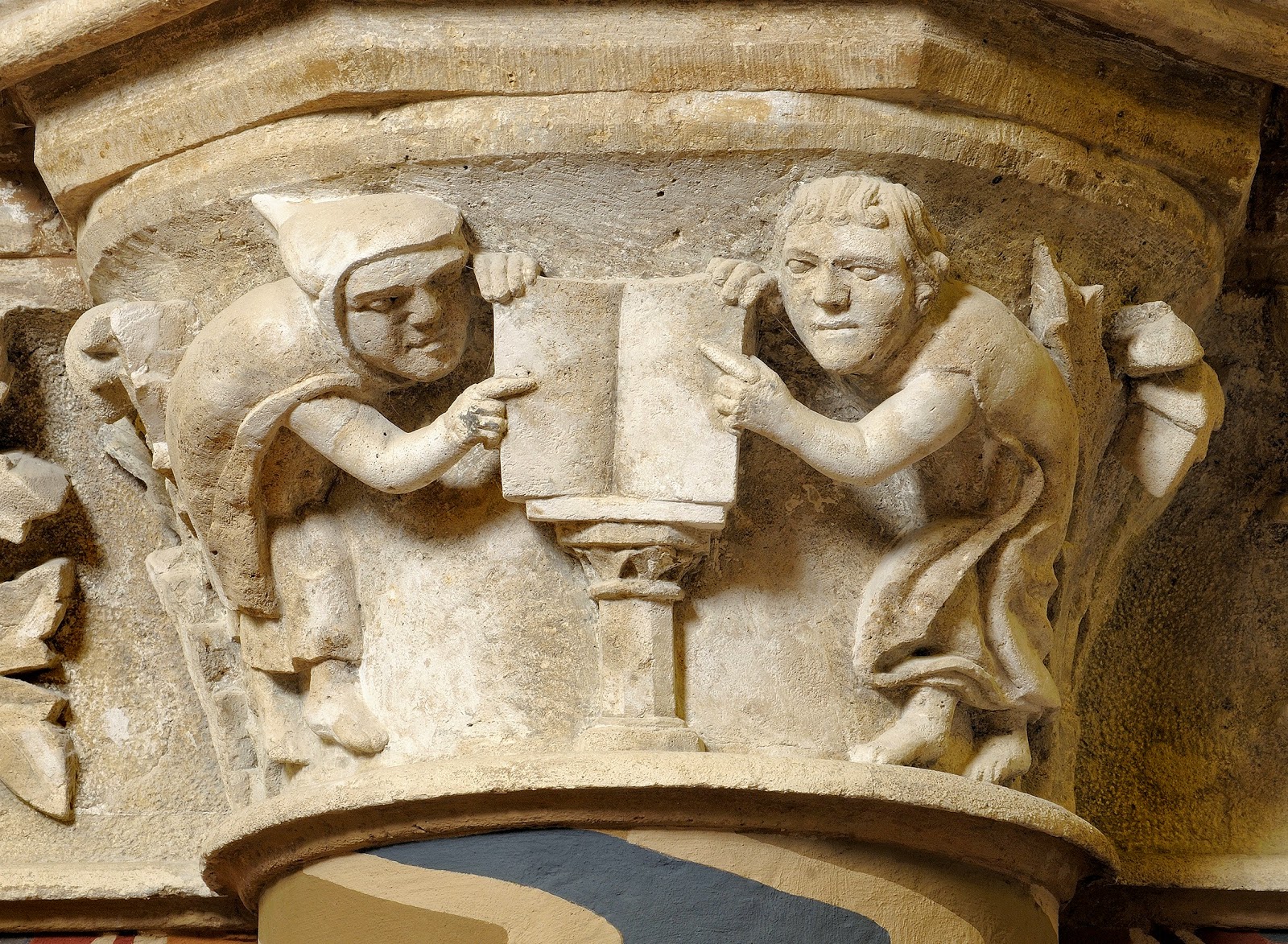 |
| Medieval stone carving from the Matthias church |
The exhibition contains a generous sampling of the enormous collection of architectural drawings dating back to the time of the great 19th-century reconstruction. There is a separate section dedicated to the 19th century ornamental decoration and wall paintings of the church (look for it in an upstairs gallery). One of the main attractions of the exhibit is probably the vast plaster model that Frigyes Schulek made for the Matthias Church: though it was damaged during the Second World War, it is still a marvellous relic of the history of Hungarian architecture. The display also presents, for the first time to a wider public, some of the most beautiful artworks of the liturgical collection of the Buda Castle Parish of the Virgin Mary, a co-organizer of the exhibition. Some of these are on display at the church itself - which of course should also be visited for a full experience.
There is also another section of the exhibition focusing on the most recent restoration campaign. Posters were made about the archaeological research, as well as the various phases of structural renovation and restoration. These bilingual posters are available on the website of the Matthias Church. See in particular the following: art history, photogrammetric survey, archaeology as well as additional documents on restoration.
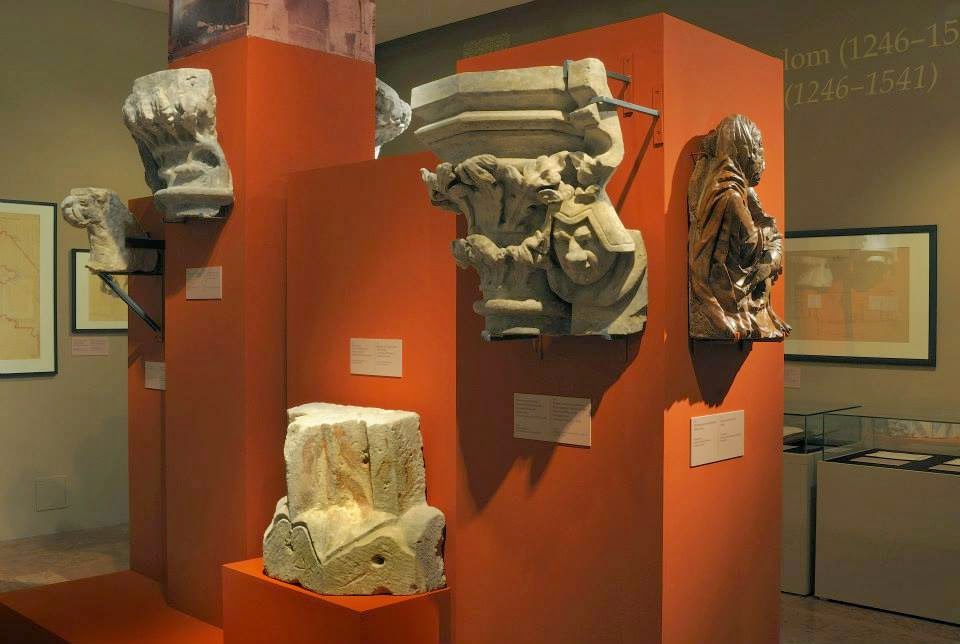 |
| Views from the exhibition |

The exhibition is accompanied by a very extensive catalogue, which provides a detailed overview about the history and construction of the church. It contains detailed scholarly studies, as well as over 350 catalogue entries on 780 pages. Principal authors include the curators of the exhibition, namely Péter Farbaky, Lilla Deklava, Anna Rákossy and András Végh.
Further information is available on the website of the Budapest History Museum as well as on the website of the Matthias Church itself. If you would like to understand the urban context of the church, I can highly recommend the online database and topography of Buda Castle, created by the Budapest History Museum and the Research Centre for the Humanities of the Hungarian Academy of Sciences. The database has more information about the church itself. You can also read a study by Gergely Buzás about the southern portal (Portal of the Virgin) of the church, which was built after the southern tower collapsed in 1384.
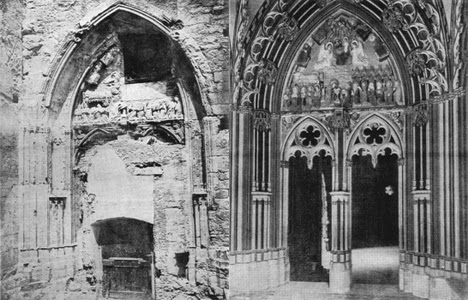 |
| Portal of the Virgin as it was uncovered and then reconstructed |
The exhibition will be on view until October 18, 2015. Photos by Budapest History Museum. A panorama photo of the interior is available here.
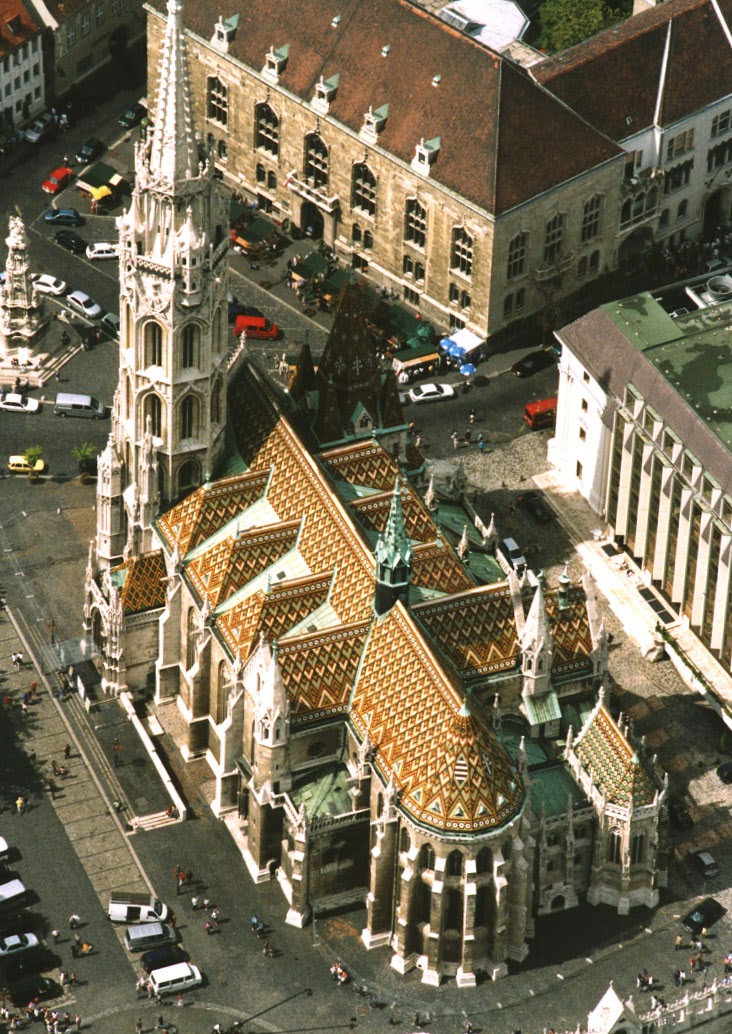 |
| Aerial photo of the church by Civertan |
- 800 Years Of Ják Abbey
Fresco of St. George at Ják, c. 1256 This weekend - the weekend after Saint George's Day - mark the 800th anniversary of the foundation of the Benedictine monastery of Ják. It is known that the monastery was established by Márton "the Great"...
- Exterior Restoration Of The Abbey Church Of Lébény
Scaffolding at Lébény On my way to Vienna today (where my main goal was to see the exhibition on the medieval plans of the Stephansdom), I stopped at the Romanesque Abbey church of Lébény. Some alarming news emerged about the condition of the...
- Research And Renovation At Siklós Castle
The medieval castle of Siklós reopened after years of research and renovation. The castle lies in southern Hungary (just south of Pécs). For much of the 15th century (until 1481), the castle and the large estate was in the property of the mighty Garai...
- Medieval Holdings Of Budapest Museums
I often find myself trying to explain the system of Budapest's major art museums to foreigners. Although it is a clear system, it can still be confusing at times. For example, you can find important medieval artworks in all major museums of the capital....
- Destruction Of The Centers Of Medieval Hungary
On August 29 1526, the army of Suleiman the Magnificent defeated the Hungarian army at Mohács. King Louis II died on the battlefield, and the sultan's army marched on to take the capital, Buda. At that time, the Turkish army withdrew - but in 1541,...
